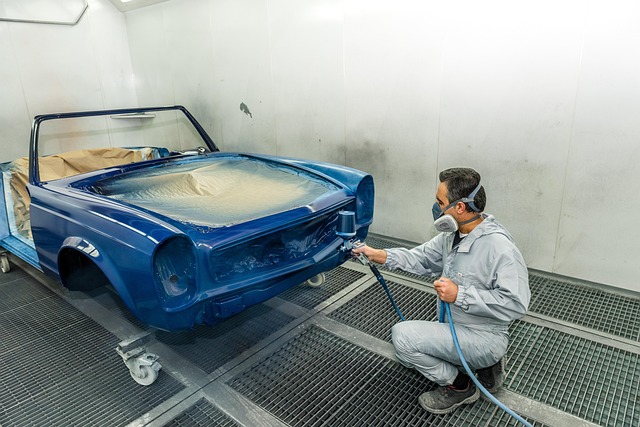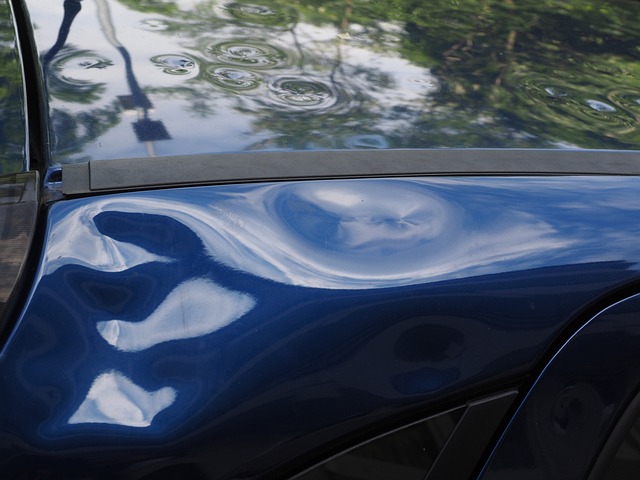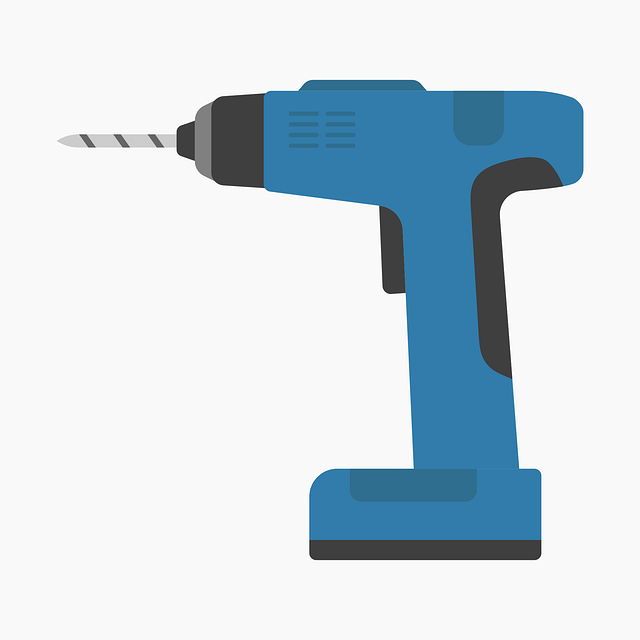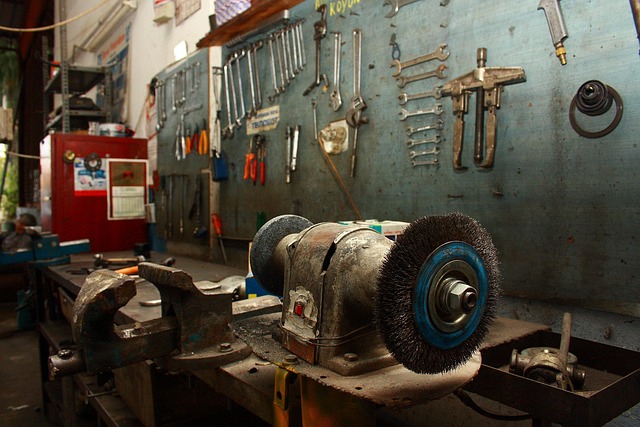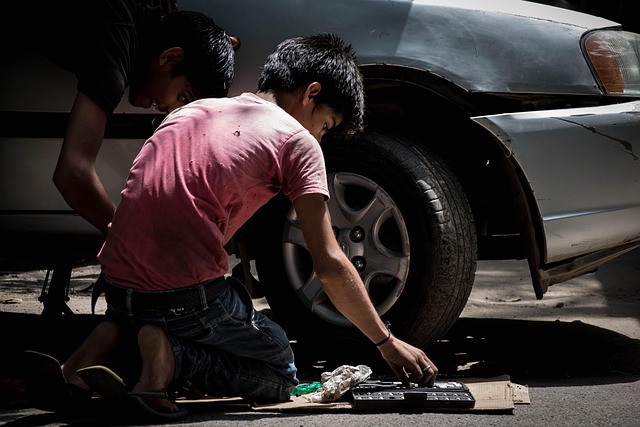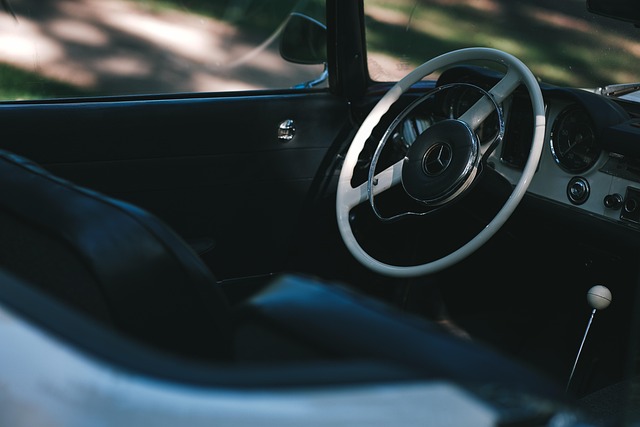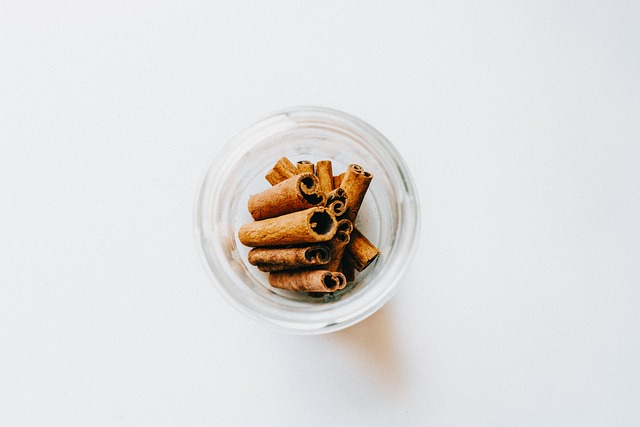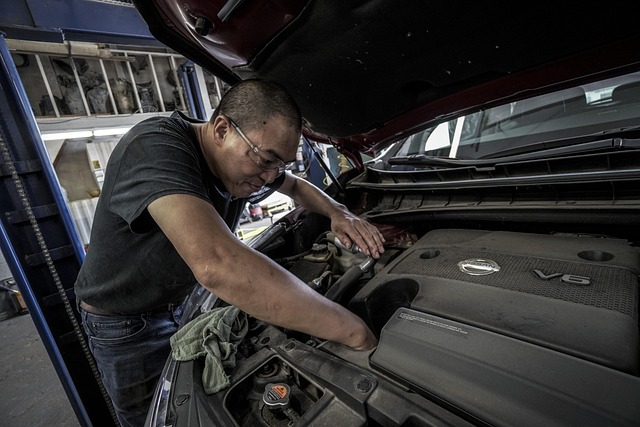Candy paint collision repair is a specialized art demanding meticulous attention to detail. It begins with an inspection, preparation, and cleaning of the damaged area. Skilled technicians prime the surface, then apply thin layers of candy paint for a rich, glossy finish. Curing, involving air-drying and chemical hardening, is crucial to prevent issues and ensure long-lasting, high-quality auto body repair with a flawless, original-looking result.
“In the realm of automotive refinishing, candy paint collision repair stands out as a meticulous art. This comprehensive guide delves into the intricate timeline expectations of such projects, from initial inspection to final touch-ups. We explore the process, highlighting the techniques and precision required for exceptional candy paint applications.
Furthermore, we dissect the critical steps of drying and curing, ensuring longevity and a flawless finish. Discover how these stages contribute to the overall success of candy paint collision repair, making your vehicle not just repaired but transformed.”
- Understanding the Process: From Inspection to Preparation
- The Art of Application: Techniques for Candy Paint Collision Repair
- Drying and Curing: Ensuring Longevity and Quality Finish
Understanding the Process: From Inspection to Preparation

Understanding the process behind candy paint collision repair is key to managing expectations. It begins with a thorough inspection to assess the extent of damage. Skilled technicians will meticulously examine the affected area, identifying any cracks, chips, or dents that require attention. This initial step is crucial as it determines the scope of work and sets the timeline for subsequent stages.
Once the damage is assessed, preparation begins. This involves cleaning and decontaminating the surface to ensure optimal adhesion for the new paint. The area may be sanded slightly to create a smooth base, and any existing repairs or fill materials are carefully addressed. This preparation phase is vital in achieving a flawless finish, ensuring that the final product resembles the original car repair services with precise auto painting techniques and meticulous vehicle restoration efforts.
The Art of Application: Techniques for Candy Paint Collision Repair
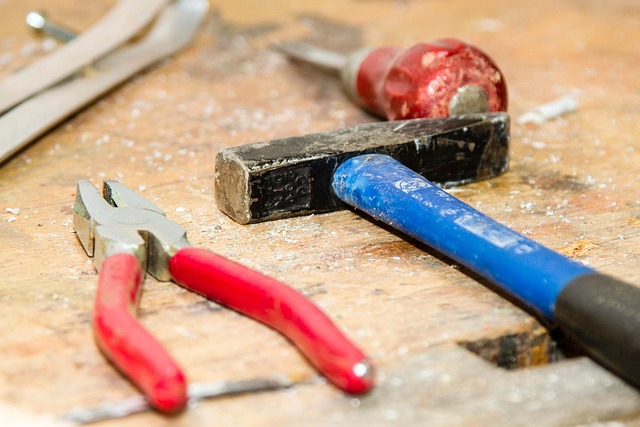
The art of applying candy paint involves a meticulous process that transforms damaged auto bodies into stunning masterpieces. Skilled technicians utilize specialized techniques to achieve the desired effect, ensuring each step is executed with precision. This begins with thorough preparation, where the surface is carefully cleaned and sanded to create a smooth base. Priming is the next crucial phase, acting as a bond between the repair area and the vibrant candy paint.
Once primed, the real magic happens. The candy paint, known for its rich, glossy finish, is meticulously applied in thin, even layers. This requires expertise to avoid runs or bubbles, ensuring a flawless result. Multiple coats are often needed to achieve the intense color and depth characteristic of candy paint collision repair. The final step involves curing the paint under controlled conditions, allowing it to set properly and achieve its vibrant, glossy peak. This level of craftsmanship is what sets apart a good auto body shop from an exceptional one, delivering not just repairs but artistic transformations.
Drying and Curing: Ensuring Longevity and Quality Finish
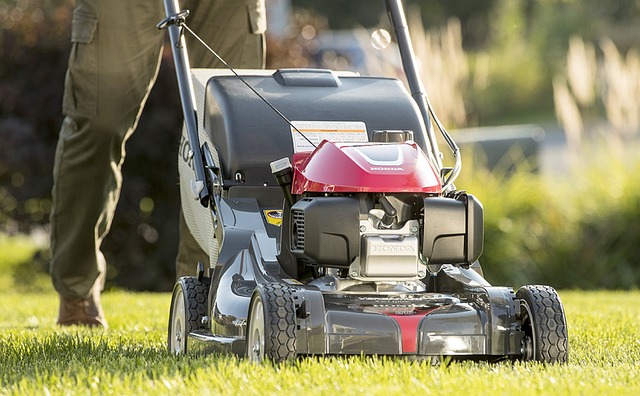
After the meticulous process of applying candy paint to a damaged vehicle during collision repair, the next critical step is allowing sufficient time for drying and curing. This period is essential in ensuring the longevity and quality of the finish. Candy paint, known for its vibrant colors and glossy finishes, requires careful handling during this phase.
Drying involves letting the paint surface air dry, which can take several hours or even days, depending on environmental conditions like temperature and humidity. Subsequently, curing occurs when the paint undergoes a chemical reaction to harden and strengthen, often accelerated by heat or specific UV light exposure. Proper drying and curing not only ensure the paint adheres well to the auto bodywork but also prevent issues such as bubbles, cracks, or an uneven finish, ultimately leading to superior car repair services and a more durable, high-quality appearance in the final auto body services.
In conclusion, successful candy paint collision repair involves a meticulous process from initial inspection to final curing. Understanding the unique techniques and timelines ensures a high-quality, durable finish that restores vehicles to their former glory. For optimal results, prioritize thorough preparation, employ expert application methods, and allow adequate drying time – these steps are key to achieving exceptional outcomes in candy paint collision repair.
